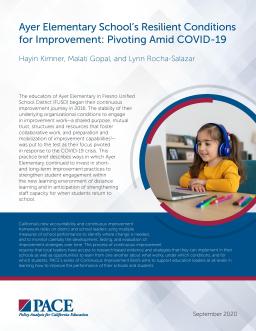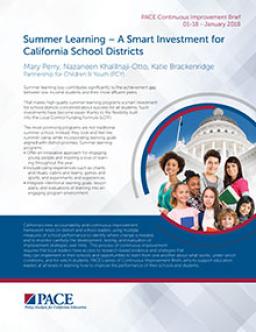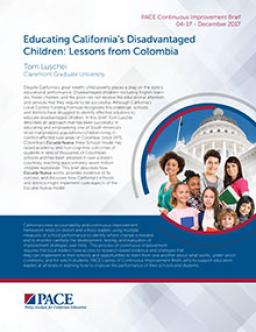CORE’s Approach
Published
Summary
Educators face a dilemma of staying up-to-date with evidence-based practices while dealing with superficial ideas. Continuous improvement methods can help in testing new ideas but if seen as add-ons, they may not yield sustained improvement. This brief describes the CORE Districts’ five-driver model that deepens educators’ ownership and sustains improvement over time.
Pivoting Amid COVID-19
Published
Summary
This brief outlines Ayer Elementary's journey of continuous improvement since 2016 and how their organizational conditions were tested during the COVID-19 crisis. Despite the challenges, the school invested in improvement practices to strengthen student engagement in distance learning and build staff capacity for when students return to school.
A Smart Investment for California School Districts
Published
Summary
Flexible funding formulas have made high-quality summer learning programs more accessible for school districts seeking to close the achievement gap. Programs that combine engaging summer camp activities with intentional learning goals can help students develop a love of learning and prevent summer learning loss. These programs incorporate lesson plans and evaluations of learning into a fun and engaging environment.
Lessons from Colombia
Published
Summary
Child poverty in California limits educational success for disadvantaged children, but schools struggle to identify effective solutions. Colombia's Escuela Nueva model has successfully educated marginalized rural children since 1975, raising academic and non-cognitive outcomes in tens of thousands of schools worldwide. This brief describes how Escuela Nueva works and discusses how California's schools might implement core aspects of the model to better serve disadvantaged students.
A Powerful Strategy for Equity
Published
Summary
Achievement gaps in education cannot be solved by looking at the school day alone, as young people also have varied experiences outside of school. Free and affordable learning experiences after school and in the summer are essential strategies for equalizing student outcomes. California districts have greater regulatory and financial flexibility to address achievement gaps under the Local Control Funding Formula. This brief describes how local education leaders are mobilizing expanded learning to close the opportunity gap and recommends key steps for districts.




